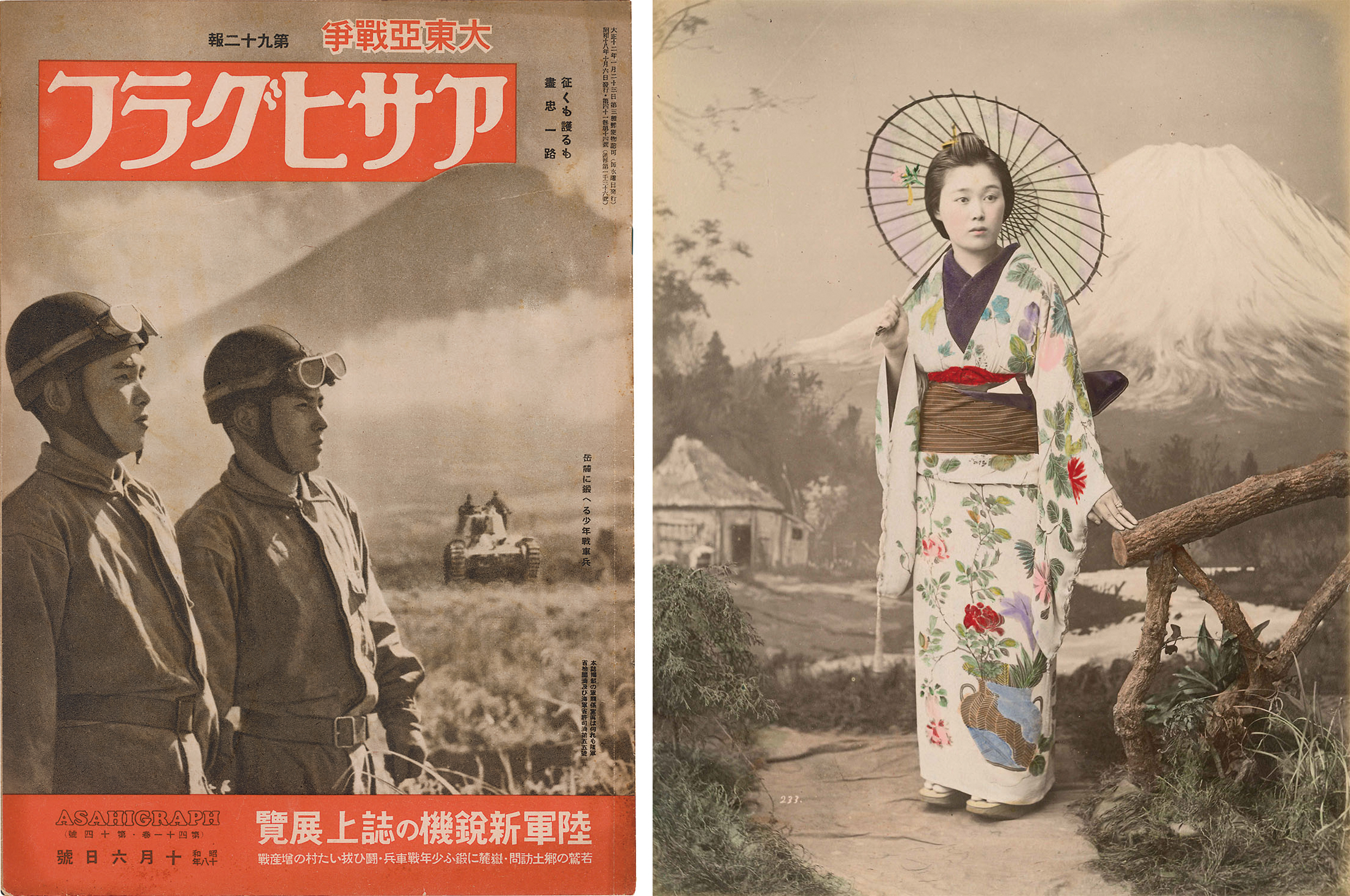The current show, 'Fuji Paradigms: Visions of Mt. Fuji,' at the Izu Photo Museum is in two parts. One is an amalgamation of images in varied formats that depict Mount Fuji as a national symbol, and the other is a tightly focused collection that documents the work of one man, Count Masanao Abe, who photographed Mount Fuji from the same spot for 18 years.
If the subject of either of these collections was only Mount Fuji, the exhibition would be extremely pedestrian. However, the diversity of formats in the first part, and the single-mindedness of the second raise so many interesting questions about photography, perception, nature and nationalism that "Fuji Paradigms: Visions of Mt. Fuji" is more than another variation of an overdone topic.
Apart from one outlying black-and-white print by the Taisho- and early Showa-Era amateur photographer Fukuhara Shinzo ("I didn't know where else to put it," one of the curators said), the exhibition opens with numerous examples of 19th-century "Yokohama shashin," a style of photography first pioneered by Europeans whose studios were based in the treaty port, and whose aesthetic background was classical Western landscape painting and kitsch Victorian studio portraiture. This was enthusiastically taken up by Japanese photographers and moonlighting ukiyo-e craftsmen who hand-tinted the images. The resulting fairy-tale pictures were bound into elaborately decorated lacquered albums and became a profitable export business.

















With your current subscription plan you can comment on stories. However, before writing your first comment, please create a display name in the Profile section of your subscriber account page.